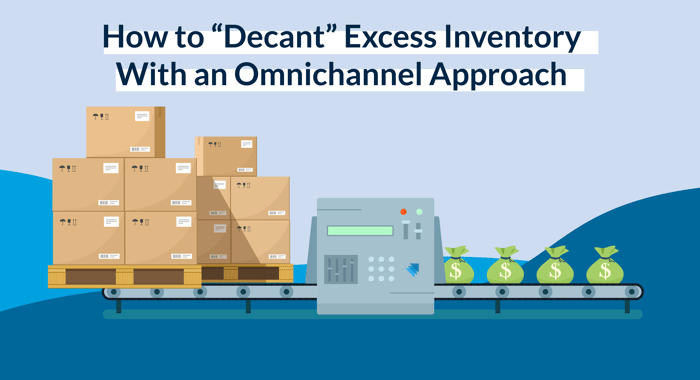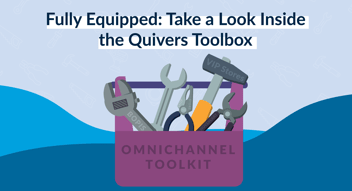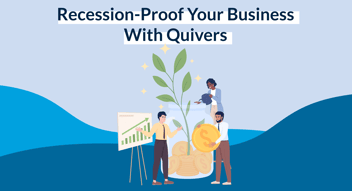How to “Decant” Excess Inventory With an Omnichannel Approach

The French just aren’t drinking wine like they used to: In 1961, the average citizen drank 20 liters of alcohol per year, but today that number has plummeted to 5.6 liters. More specifically, red wine sales have fallen by 32% in the last 10 years. It’s no surprise that this drop in demand has contributed to widespread overstocking in the region.
There is some cause for cheer for French winemakers: Their government will soon pay them $215 million to repurpose surplus stock. Unfortunately, this type of arrangement isn’t available to the thousands of specialty brands in the US and beyond which are also struggling with excess inventory.
Take the renowned bicycle brand Specialized, which is currently experiencing “all-time high” inventory levels. Efforts to sell off excess stock have been complicated by the current state of the economy and a decline in consumer confidence, resulting in a 21% decrease in sales this year.
With stock levels high across the majority of US retailers and Salesforce forecasting just a 1% year-over-year sales growth for the US holiday season, many brands are looking on nervously. Thankfully, with the help of a few strategic adjustments, it's entirely possible to come out the other side toasting healthier stock levels and increased profits.
Why Are Brands So Overstocked?
Overstocking is rife throughout the US, with prominent retailers like Walmart, Foot Locker and Dick’s recently experiencing overstocking. While these industry giants have sophisticated support systems in place, specialty brands often lack the same level of resources and resilience.
Specialty brands are grappling with excess inventory for a variety of reasons. One of these is the “bullwhip effect” — where brands’ aggressive ordering due to rising sales, combined with shipping delays during the early days of the pandemic, have finally caught up with them. Some point out that overstocking is nothing new, and state that regardless of fluctuating demand over the past few years, brands must improve the accuracy of their short and long-term demand forecasting to address overstocking effectively.
While retailers are reacting to the challenge of overstocking by being more cautious with wholesale and making smaller buys throughout the season, long lead times mean brands aren’t afforded that same luxury.
Retailers not placing firm purchase orders means brands are having to place speculative bets on how much retailers will purchase. This contributed to G-III Apparel Group and VF Corporation (JanSport, Eastpak, Timberland, The North Face, Dickies, Vans, Supreme, etc) cracking 100% inventory growth last year.
Speaking in an NBDA webinar, Specialized Executive Vice President Bob Margevicius suggests that retailers “only ordering what’s needed” has left the bicycle producer with over 14 months of stock on hand.
Unable to react to every twist and turn of the economy, brands are often left counting the cost of a swollen inventory. Operational efficiency and capacity decline once a certain amount of space in a warehouse is filled, and purchasing additional warehousing can be costly — especially if it involves borrowing and incurring future interest payments.
How Can Brands Effectively Liquidate Inventory?
Brands intent on avoiding overstocking should focus on improving demand forecasting. Thanks to recent technological advances, slow manual processes can now be replaced with AI-driven models.
Still, given that demand forecasting will never be 100% accurate, brands will most likely always need ways to clear excess stock. Right now, they have the following options available to them.
1. Off-Price Retailers
Off-price retailers like TJ Maxx and Ross Stores are capitalizing on consumers feeling the pinch and looking for value. That’s why, in the face of rising inflation, they stand out as some of the few players in the commerce industry who are raising their annual revenue expectations.
Considering this, many specialty brands — particularly smaller ones that have their cash flow tied up in inventory — are turning to off-price to recoup a portion of their products’ sunk costs.
While off-price retailers can help brands recover some of their losses, not all specialty brands want to be associated with them. Having products in these stores can diminish the brand’s image and reputation, especially if they’re known for exclusivity or premium pricing. This approach can even provoke a cannibalization of sales if it results in consumers waiting for discounts at off-price stores rather than buying at full price.
When brands sell their products to off-price retailers, they relinquish control over the way their products are presented and sold. Considering the significance of the shopping experience in fostering customer loyalty, along with the valuable data acquired from direct consumer sales, specialty brands might think twice about liquidating stock through off-price retailers.
2. Discounting
One common alternative to selling through off-price retailers is for a brand to discount its own products. This approach allows the brand to retain complete control over both the shopping experience and any customer data gained through sales.
Despite these advantages, discounting can be a double-edged sword when it comes to overstocking. Macy’s CEO Jeff Genette recently highlighted this when stating that discounts had been successful at reducing overall inventory levels, but had also made it more difficult to accurately predict buying levels for future seasons. Meanwhile, Dick’s Sporting Goods Chief Executive Lauren Hobart believes discounting to unload excess inventory has eaten into the retail chain’s profit margins.
Specialty brands with fewer resources than these industry giants are likely to encounter even greater challenges when attempting to make discounting work for them.
3. Online Marketplaces and Inventory Liquidation Services
Brands sometimes turn to marketplaces like Amazon to offload surplus inventory. The appeal of accessing a large audience of potential customers is clear to see, but brands should be cautious about putting their products in the hands of industry giants.
Big marketplaces often compete against specialty brands by offering their own private-label products. They may even run advertisements on a brand's products, directly competing with the brand itself and driving up their advertising expenses.
Inventory liquidation services provide a quick and simple way to get rid of overstock items, but aren’t always the optimal choice for several reasons. These services frequently provide meager profit margins, and in some cases, even result in losses. Just like off-price retailers, online marketplaces and inventory liquidation services reduce brands' control over the customer experience and can fail to provide satisfactory customer data.
Why an Omnichannel Approach Works
There isn't a single definitive solution for brands aiming to reduce overstocking or get rid of surplus inventory. However, this simple shift in strategy often works wonders. By adopting a more connected, omnichannel approach to commerce, brands can regain control of their inventories and supercharge their sales.
One of the primary causes of overstocking is reduced consumer demand. Despite the current economic climate, sales are still being made. Yes, consumers are keeping their purse strings tight, but there’s no reason they can’t still convert if they receive the right encouragement toward a quality product.
Nearly 90% of consumers now expect brands to offer omnichannel shopping experiences, and it’s easy to see why. Omnichannel offers them the convenience and flexibility of ecommerce with all of the perks of in-store browsing. It reflects how people like to shop, and when done correctly, provides consumers with a seamless shopping experience that trumps buying through a single channel.
Brands also stand to reap substantial rewards. Omnichannel shoppers make purchases 70% more often and spend about 34% more than people who stick to one channel.
One of the most popular omnichannel fulfillment options is BOPIS, short for Buy Online, Pick Up In-Store. Around 98% of retailers are already offering BOPIS and 39% of shoppers seek it out when shopping online.
Any brands concerned about the impact of inflation on consumer spending will be pleased to hear that BOPIS is projected to drive $28 billion in incremental in-store sales this holiday season. The omnichannel fulfillment option gains even more power after holiday shipping cutoff dates, enabling brands to continue selling up until Christmas Day and achieve an astounding 5X growth rate.
But what about brands that don’t have physical retail locations for in-store pickup? They’re best advised to solidify relationships with the retailers that stock their products with the aim of providing the service together. While this may sound complicated, powerful software like the Quivers Omnichannel Toolkit streamlines the process and makes offering BOPIS remarkably simple.
Quivers offers a range of enticing omnichannel fulfillment options. Take Ship-to-Store, which empowers brands to sell directly from their website before sending the order to a local partnering retailer. The retailer can then offer a fantastic in-store or at-home experience which can include setup, customization and installation services. Alternatively, there’s Dropshipping, which allows brands to selectively route orders for retailer fulfillment. This means they can continue to make sales on their website even when their own inventory runs low or is out-of-stock.
With these omnichannel fulfillment alternatives and Quivers’ cutting-edge Point of Sale Inventory Sync technology — which retrieves live inventory data from a brand's retail network and synchronizes it with its ecommerce website — brands can finally assert full control over their inventory.
Caila Schwartz, Director of Consumer Insights and Strategy for Retail and Consumer Goods at Salesforce, says that in this economic landscape, “consumers want shopping that’s fast, frictionless and personalized, from retailers that know who they are and what they’ve bought [in the past].” Connecting with retailers for omnichannel fulfillment is perhaps the easiest way for specialty brands to meet these demands.
Despite the continued growth of ecommerce, brick-and-mortar stores remain a crucial part of the shopping equation. With an omnichannel strategy, specialty brands can entice consumers with the best of both worlds. Instead of panicking and giving up control and profits to off-price retailers and online marketplaces, brands should take inspiration from the vineyard. A more measured, omnichannel decanting of stock will always serve them better in the long run.
To learn more about the importance of an omnichannel strategy, read our Complete Guide to Omnichannel Fulfillment eBook.
The Future of Commerce is Omnichannel
In his recent NBDA webinar, Bob Margevicius highlighted the value of an omnichannel approach and the importance of not throwing all your eggs into one basket, noting that the dollar value of Specialized bicycle sales was split almost equally between specialty retailers and ecommerce. He later closed with two pieces of strong advice:
- “Constantly adapt and adjust to changing customer behavior”
- “Invest in technology to simplify transactions”
Just as reggae and folk aficionados worldwide might say, you should listen to Bob. Thanks to Quivers’ powerful Omnichannel Toolkit, you can give hesitant consumers every reason to shop with your brand, while building resilience and preparing yourself for any future bumps in the road.
Quivers doesn’t require any major changes to operations or significant investment to use. It helps you reinforce relationships with retailers and gives you more data that can be leveraged to forecast demand and prevent overstocking in the first place.
According to Matt Garfield, managing director with FTI Consulting, retailers are unlikely to increase purchase orders anytime soon, even if demand comes roaring back. Thankfully, this no longer spells disaster for specialty brands. Regardless of what the economy is doing, Quivers makes every year a vintage year.
Fancy the commerce equivalent of a wine tasting? Get in touch today for a short demo of the Quivers platform from an omnichannel expert.



